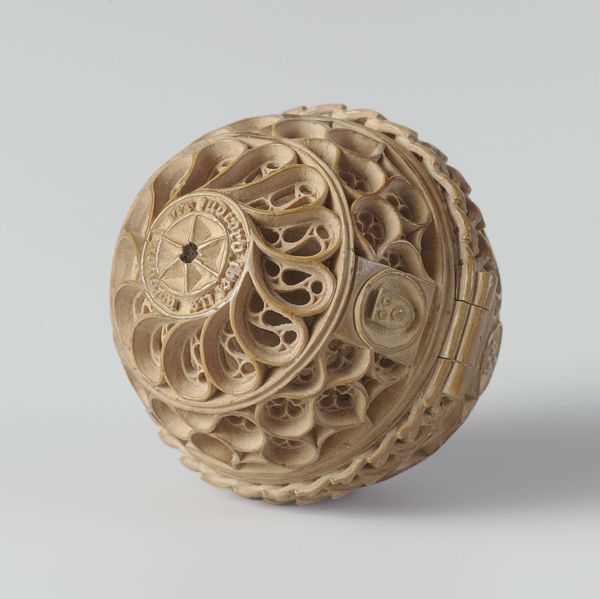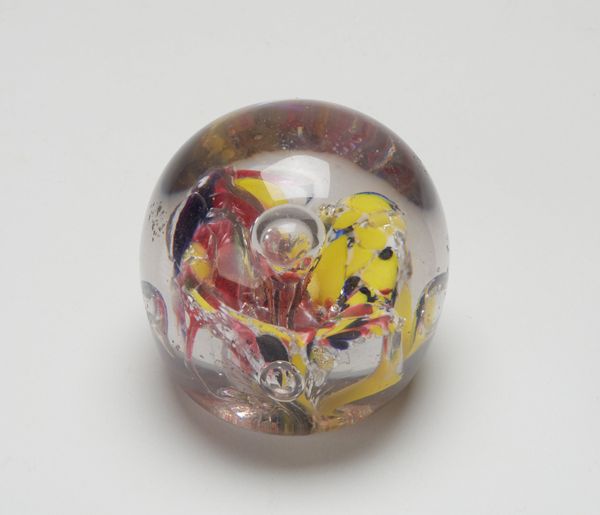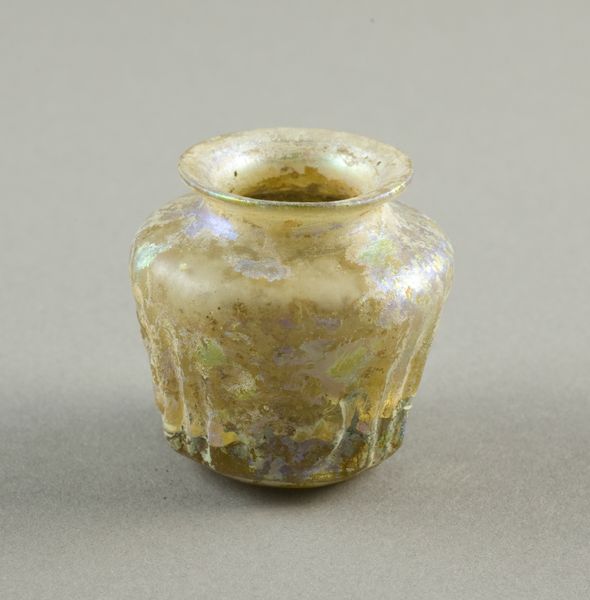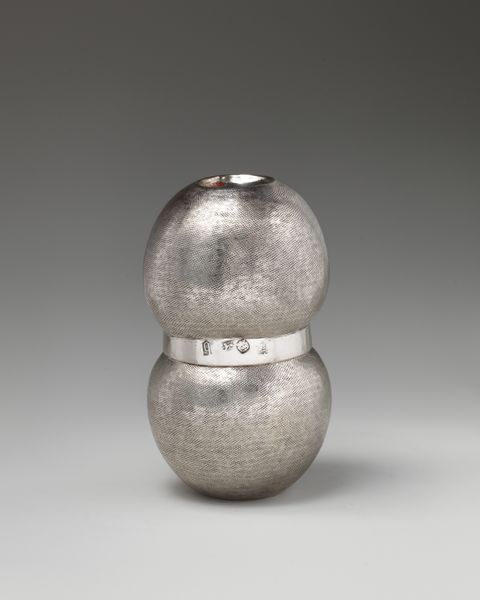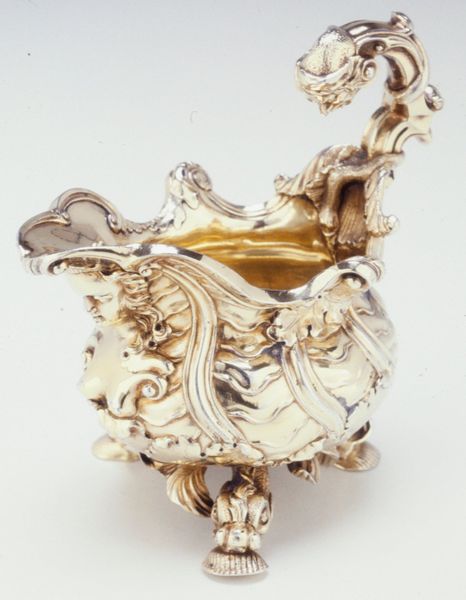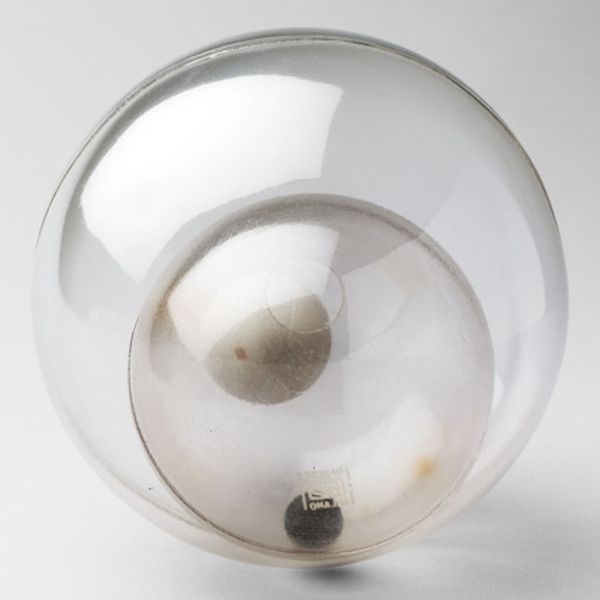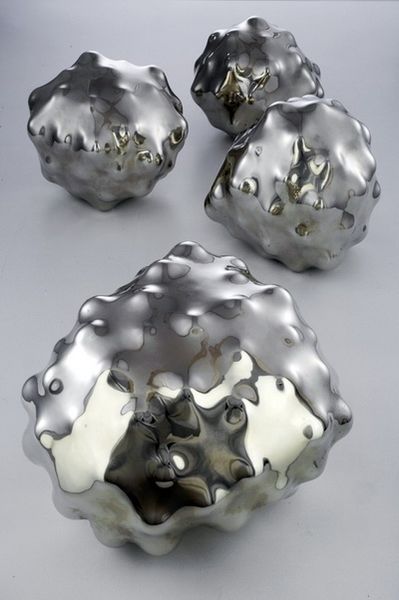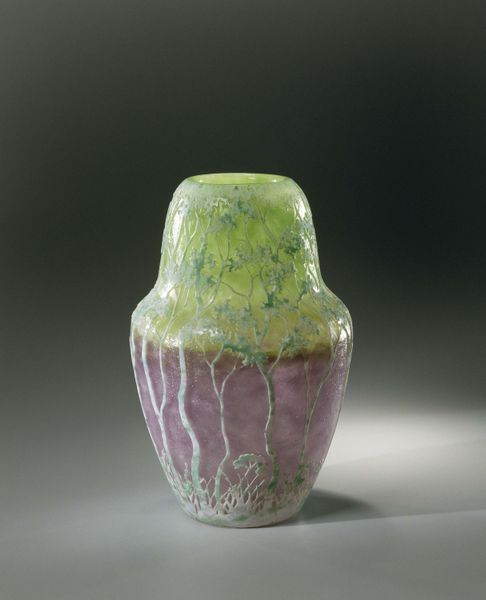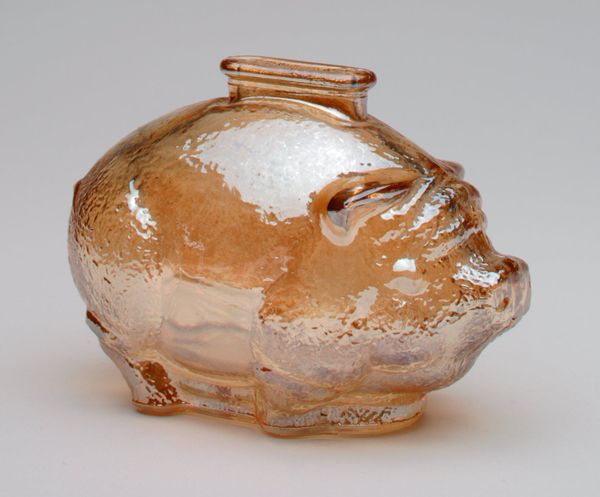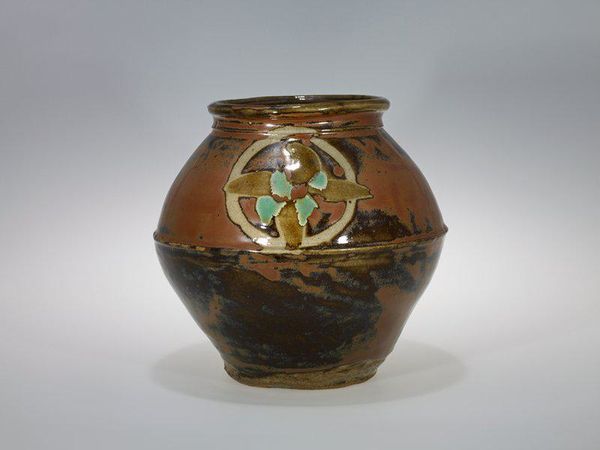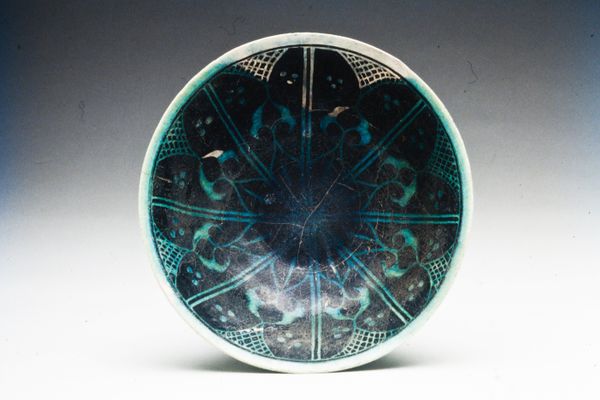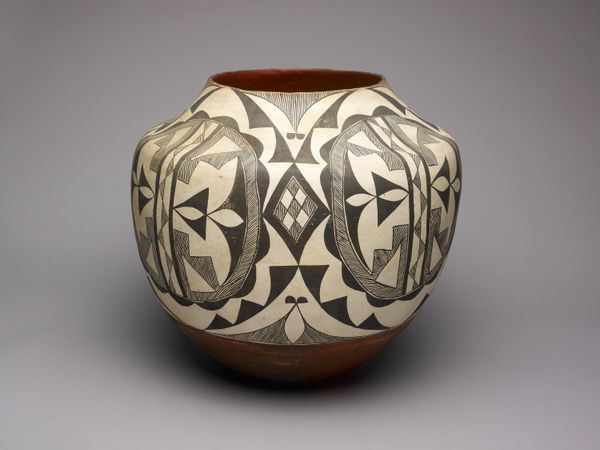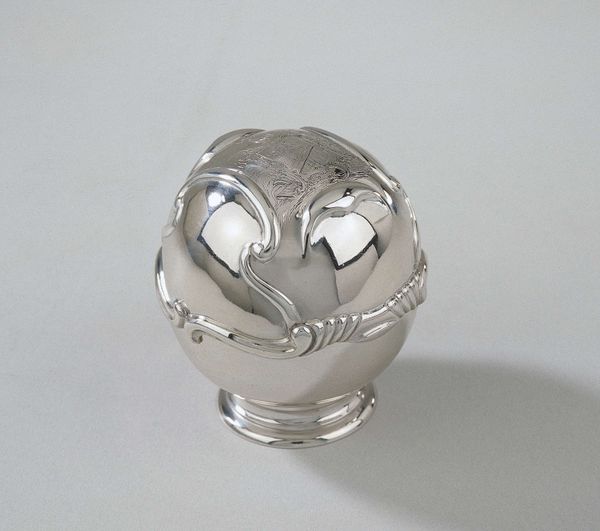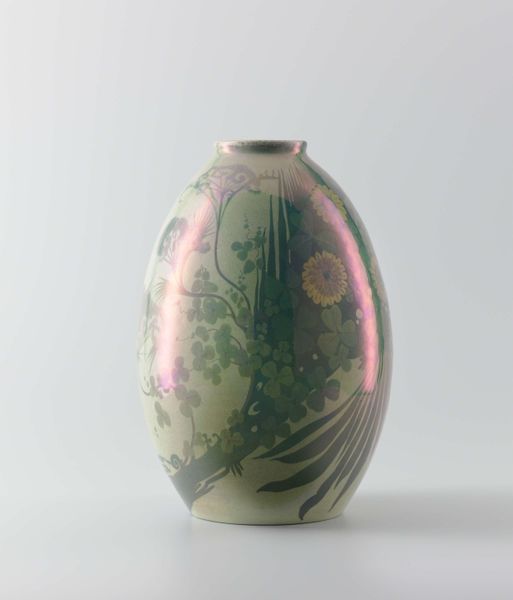
Dimensions: height 12.7 cm, width 13.6 cm, depth 13.3 cm, diameter 9.5 cm
Copyright: Rijks Museum: Open Domain
Curator: This striking vase by Émile Gallé, titled "Tête de Monstre Japonais" or "Head of a Japanese Monster," dates back to 1876 and combines ceramic and glass. It's a beautiful example of Orientalism meets Art Nouveau. Editor: My first thought? Smoky and fantastical. The rounded shape, the olive-tinged glass… it feels like a potion bottle from some old fairytale. There’s a kind of eerie elegance to it, isn’t there? Curator: Absolutely. Gallé was a master of imbuing his pieces with symbolism. You can see how the monster head blends almost seamlessly with the vessel’s form. He skillfully integrates Japanese motifs into his work. It embodies Japonisme, that 19th-century craze in Europe. But it's more than just decorative appropriation. Editor: Precisely. We can see the visual influence, the flattened perspective in those swirling patterns, and that delicately etched grasshopper – very reminiscent of ukiyo-e prints. The way he marries those eastern motifs with the fluid, organic lines of Art Nouveau…it almost feels like a conversation. A dialogue between cultures grappling with colonialism, trade, and cultural fascination. Curator: Indeed, he was experimenting with different techniques for applying decoration to glass, incorporating etched and enameled details that showcase the texture and transparency of the materials. I see an attempt to connect inner feelings to external realities. Editor: But I keep coming back to this tension, that inherent power imbalance. A "monster head," rendered in a Western style, appropriating Eastern motifs…It begs the question of who gets to define whose story? Is this honoring another culture, or reducing it to a trend? It makes me really uncomfortable. Curator: I share that uneasiness. But isn’t it also a reminder that cultural exchange, however fraught, can still be a source of unexpected beauty? Art becomes the arena in which those very conflicts can unfold. Thanks for drawing attention to those complications. It certainly adds a new layer to my appreciation. Editor: My pleasure. It's that tension, those layered interpretations, that make a piece truly fascinating.
Comments
rijksmuseum about 2 years ago
⋮
This vase displays the glass artist Émile Gallé’s response to Far Eastern art. Its shape is based on the ferocious Japanese lion deity shisa (or shishi), which occurs as a temple guardian throughout Asia. The vase is called ‘Head of a Japanese monster’. The manes around its gaping mouth are engraved, as is the grasshopper on its cheek.
Join the conversation
Join millions of artists and users on Artera today and experience the ultimate creative platform.
